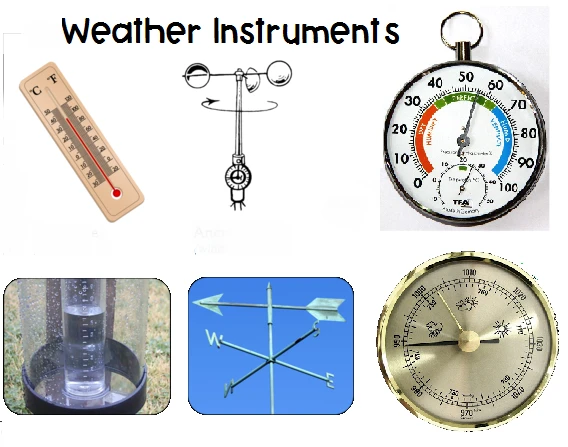
# Weather Instruments: Essential Tools for Accurate Forecasting
## Introduction to Weather Instruments
Weather instruments are specialized tools designed to measure various atmospheric conditions. These devices play a crucial role in meteorology, helping scientists and weather enthusiasts collect accurate data for forecasting and climate studies. From simple thermometers to sophisticated radar systems, weather instruments provide the foundation for understanding our ever-changing atmosphere.
## Common Types of Weather Instruments
### Thermometers
Thermometers measure air temperature, one of the most fundamental weather parameters. Modern digital thermometers provide quick and precise readings, while traditional mercury or alcohol thermometers remain reliable options for many applications.
### Barometers
Barometers measure atmospheric pressure, which is essential for predicting weather changes. A sudden drop in pressure often indicates approaching storms, while rising pressure typically signals fair weather ahead.
### Anemometers
These instruments measure wind speed and direction. Cup anemometers are common for measuring speed, while wind vanes indicate direction. Some advanced models combine both functions in a single device.
### Hygrometers
Hygrometers measure humidity levels in the air. Understanding humidity is crucial for predicting precipitation, fog formation, and assessing human comfort levels in different weather conditions.
### Rain Gauges
Simple yet effective, rain gauges measure the amount of liquid precipitation over a set period. These instruments come in various designs, from basic cylindrical containers to sophisticated tipping-bucket models used in automated weather stations.
## Advanced Weather Measurement Tools
### Weather Radars
Modern weather radars can detect precipitation, measure its intensity, and track storm movements over large areas. These powerful tools are indispensable for severe weather warnings and aviation safety.
### Weather Satellites
Orbiting satellites provide a global perspective on weather patterns, cloud cover, and atmospheric conditions. They offer invaluable data for long-range forecasting and climate monitoring.
### Weather Balloons
Equipped with instrument packages called radiosondes, weather balloons collect data about temperature, humidity, and pressure at various altitudes. This information helps create vertical profiles of the atmosphere.
## The Importance of Proper Instrument Placement
Accurate weather measurements depend not just on quality instruments but also on their proper placement. Weather stations should be:
– Located in open areas away from buildings and trees
– Positioned at standard heights (typically 1.5-2 meters above ground)
– Shielded from direct sunlight for temperature readings
– Regularly maintained and calibrated
## Choosing the Right Weather Instruments
When selecting weather instruments, consider:
– Your specific measurement needs
– Accuracy requirements
– Budget constraints
– Maintenance capabilities
– Data recording preferences (manual vs. automated)
For casual observers, basic instruments may suffice, while professional meteorologists require high-precision, calibrated equipment with data logging capabilities.
## The Future of Weather Instruments
Technological advancements continue to revolutionize weather instrumentation. Emerging trends include:
– Miniaturized sensors for portable weather stations
– Increased automation and remote monitoring capabilities
– Integration with smart home systems
– Improved data visualization and analysis software
– Enhanced connectivity for real-time weather sharing networks
As our understanding of atmospheric processes grows, so too does the sophistication of the tools we use to measure them. Weather instruments will remain essential for accurate forecasting, climate research, and our daily weather awareness.
Keyword: wether instruments